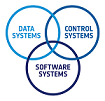Speaker
Description
The ClearSpace-1 mission will be the first attempt in the history to remove a debris in space. Funded in the framework of ESA’s Active Debris Removal/ In-Orbit Servicing (ADRIOS) project, the mission aims at capturing and deorbiting Vespa, a rocket upper stage left in an approximately 800 km by 660 km altitude orbit after the second flight of ESA’s Vega launcher back in 2013.
Spaceborne rendezvous is known to be a risky and challenging task. Dealing with a truly noncooperative target makes this mission even more challenging. Contrary to classical in-orbit rendezvous and docking activities which can rely on some degree of cooperation from the target such as stabilized attitude, exchange of information, or special markers to ease the navigation, the ClearSpace-1 mission intends to capture an object which will not ease this task by any sort of means.
Therefore, it is necessary to design robust Guidance, Navigation and Control (GNC) and capture strategies able to cope with an unknown target state which can first be more precisely analyzed during the rendezvous in orbit. In addition, limited ground visibility in low-Earth orbit and the desire to limit the operational costs require a high level of onboard autonomy, creating additional challenges in terms of autonomous system integrity monitoring.
After a quick overview of the mission, the presentation aims at describing in more detail the specific GNC challenges associated to this mission and the resulting high-level requirements posed on the system architecture. Overall, a proper balance needs to be achieved between the desire to pave the way for a commercial mission, thus seeking for cost-effective solutions with low recurring costs, while ensuring safety during critical phases, which is usually achieved relying on costly redundant and segregated architectures. Furthermore, measuring the state of a noncooperative object makes it necessary to embark innovative sensors and advanced technology with limited technological maturity,
creating additional constraints in terms of onboard resources and large data handling capabilities for ground-based commissioning and analyses.

